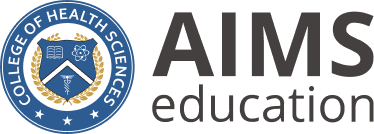MRI TECHNOLOGY
Associate of Applied Science
Length
24 Months
ScheduleThe schedule for this program is based on a 15-week semester. The daily schedule and weekly hours will vary each semester based on the required lecture, lab, and clinical hours. MRI Technology students must have flexible schedules and be able to attend classes during morning, day, and evening hours.
Daily schedule varies
Financial AidFederal student aid is available for those who qualify. Students must submit a Free Application for Federal Student Aid (FAFSA) to determine their eligibility. Please contact our financial aid department to learn more.
YES
Application DueEarly Acceptance: Applicants may be considered for early admission if their applications are submitted at least 30 days before the deadline.
January 30, 2026
Length
24 Months
ScheduleThe schedule for this program is based on a 15-week semester. The daily schedule and weekly hours will vary each semester based on the required lecture, lab, and clinical hours. MRI Technology students must have flexible schedules and be able to attend classes during morning, day, and evening hours.
Daily schedule varies
Financial AidFederal student aid is available for those who qualify. Students must submit a Free Application for Federal Student Aid (FAFSA) to determine their eligibility. Please contact our financial aid department to learn more.
YES
Application DueEarly Acceptance: Applicants may be considered for early admission if their applications are submitted at least 30 days before the deadline.
January 30, 2026
Technical Standards
Prospective MRI Technology students must possess sufficient strength, motor coordination and manual dexterity to:
- Stand, bend, kneel, crawl, twist, squat and walk for 30% of work time.
- Sit for 70% of work time.
- Work on a computer for 70% of work time.
- Lift up to 50 lbs. unassisted.
- Transport, move, and lift patients from a wheelchair or stretcher to the scanning table and physically assist patients into proper positions for examination. Patients may be sedated or incapable of moving themselves.
- Move, adjust and manipulate a variety of MRI equipment weighing up to 500 lbs. (on wheels) in and out of scanning room.
- Perform venipuncture for injections and to start IV catheters.
Prospective MRI Technology students must:
- Possess sufficient strength, finger dexterity and flexion to perform finite motor skills.
- Possess sufficient eye/hand coordination skills related to performance of MRI examinations.
- Be able to use senses (vision, hearing, smell and touch) to recognize changes in a patient’s condition and needs.
- Be able to hear, understand and react quickly to verbal instructions and patient needs, including but not exclusive to hearing codes, alarms and patient calls.
- Be able to work in a semi-darkened room for prolonged periods of time.
Health Standards
Prospective MRI Technology students must be able to consistently demonstrate emotional, mental and physical health in order to:
- Meet the demands of the position including handling stressful situations related to technical and procedural standards and patient care situations.
- Provide physical and emotional support to the patient during examinations and be able to respond to situations requiring basic first aid, patient care, and emergency care of the patient in the absence of, or until the physician arrives.
- Follow directions effectively and work closely with members of the health care community.
- Carry out all assigned duties.
- Be able to communicate both verbally and non-verbally in an effective manner with staff, patients and physicians, in order to explain procedures, give instructions and obtain information.
- Perform MRI examinations and procedures according to established standards, emphasizing safety at all times.
- Be able to view recorded images for the purpose of identifying proper protocol, procedural sequencing, technical qualities and identification of pathophysiology.
Individuals with disabilities are encouraged to apply to this program. Candidates who indicate that they cannot meet one or more of the expectations will be reviewed further by the Admissions Committee and Program Director to determine if reasonable accommodations might be possible to facilitate successful completion of the program and preparation for the national certification exam.




















